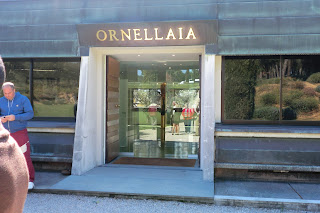Prior to Spain's entry into the EU, its sparkling wine was called Champán or Champaña. With the EU regulation that all sparkling wines called Champagne has to originate from the Champagne region of France, the Spanish sparkling was renamed Cava, a reference to the place -- caves-- where the early wines were stored for aging. Cava was granted DO designation in 1986 on Spain's entry into the EU.
Cava is produced in 159 municipalities spread across Catalonia, Aragon, Navarra, Rioja, and Valencia but fully 95% of that production originates in Catalonia's Penedès, a wine region located about 40 kilometers southwest of Barcelona.
Penedès is surrounded by the Monserrat range which provides a protective barrier from the heat and humidity of the Mediterranean as well as the cold winds -- levanter -- from the north and east. The climate is Mediterranean with annual temperatures averaging 15.5℃ (60℉) across the region but with slightly differing micro-climates within its three sub-zones. In Baix Penedès, the area closest to the coastline, elevation ranges between 0 and 250 meters and the temperature is milder, thanks to its proximity to the sea. In Penedès Superior -- 500 - 800 meters elevation -- there is greater rainfall than in the companion zones and a greater differential between maximum and minimum temperatures. Penedès Central (250 - 500 meters) experiences a mix of the Superior and Baix microclimates.
 |
| Source: dopenedes.es |
The soil in the Penedès region is a mix of limestone, sand, and clay with a chalky top layer atop a layer of clay which in turn overlays a rocky base.
While the Méthode Champenoise is utilized in the production of Cava, the traditional Champagne grapes, if used at all, are bit players in this drama. The prime varieties used in Cava are Macabeo, Xarel-lo, and Parelleda but small amounts of Chardonnay, Malvasia, Pinot Noir, Trepat, Red Grenache, or Monastrell can be used in the blend. Macabeo, Xarel-lo, and Parellada are grown in both Baix and Central Penedès but the highest-quality Parellada grapes are grown in Penedès Superior.
 |
| Source: crcava.es |
In order to be called Cava, the sparkling wine made in the region has to be aged a minimum of 9 months before being taken to market. Many producers age their wines for 2 to 4 years in order to provide wines with more character. To be classified as Gran Reserva, a Cava has to be aged for at least 30 months.
Cava DO can be either white or rosé styled as follows:
- Brut Nature -- 0 to 3 g/l
- Extra Brut -- 3 to 6 g/l
- Brut -- 6 to 12 g/l
- Extra Dry -- 12 to 17 g/l
- Dry -- 17 to 32 g/l
- Semi-Dry -- 32 to 50 g/l
- Dulce -- > 50 g/l.
The attractiveness of Cava is tied to its perception as a "crisp, fruity, well-balanced" sparkling wine with straightforward flavors which can be acquired at prices well below the cost of Champagne. For example, I have called upon the services of the NV Segura Viudas Cava Aria Brut on many an occasion and have been impressed by the pineapple, honey, pear, and bread aromas and flavors which have been delivered at the pocket-pleasing price of $12/bottle. The leading Cava producers are Codorniu, Freixenet, and Segura Viudas.
Cava production in 2011 was 239,556,000 bottles, 63.5% of which was exported. While domestic consumption in 2011 fell by 8.7% over 2010 ( a result of current economic conditions within the country), exports increased by 2% resulting in an overall reduction in production of 2.14%. The primary export markets for Cava are Germany, the UK, Belgium, and the US in that order.
But it is not all peaches and cream in Cava-land. According to an article on decanter.com (Friday, November 2, 2012), producers in the Penedès wine region are deserting the Cava appellation and branding their wines as Spanish sparkling. The producers are taking this action because they feel that the Cava brand has a poor image with low prices baked in in many markets. Further, these producers feel that the appellation is too large to be managed or regulated effectively. According to Josep Albet, President of the Regulatory Council of Penedès (as quoted in the article), nine producers have already deserted the appellation and five others are poised to follow. He will be making two recommendations to the authorities as potential solutions to the problem: (i) shrink the appellation and (ii) have the entire Penedès region designated organic. The latter proposal is seen as adding value and allowing market differentiation. This is an issue in its early stages and it is not yet clear how it will evolve. It is unclear however how a Spanish sparkling branding would work as I already think of Cava as Spanish sparkling.
©Wine -- Mise en abyme


.jpg)


